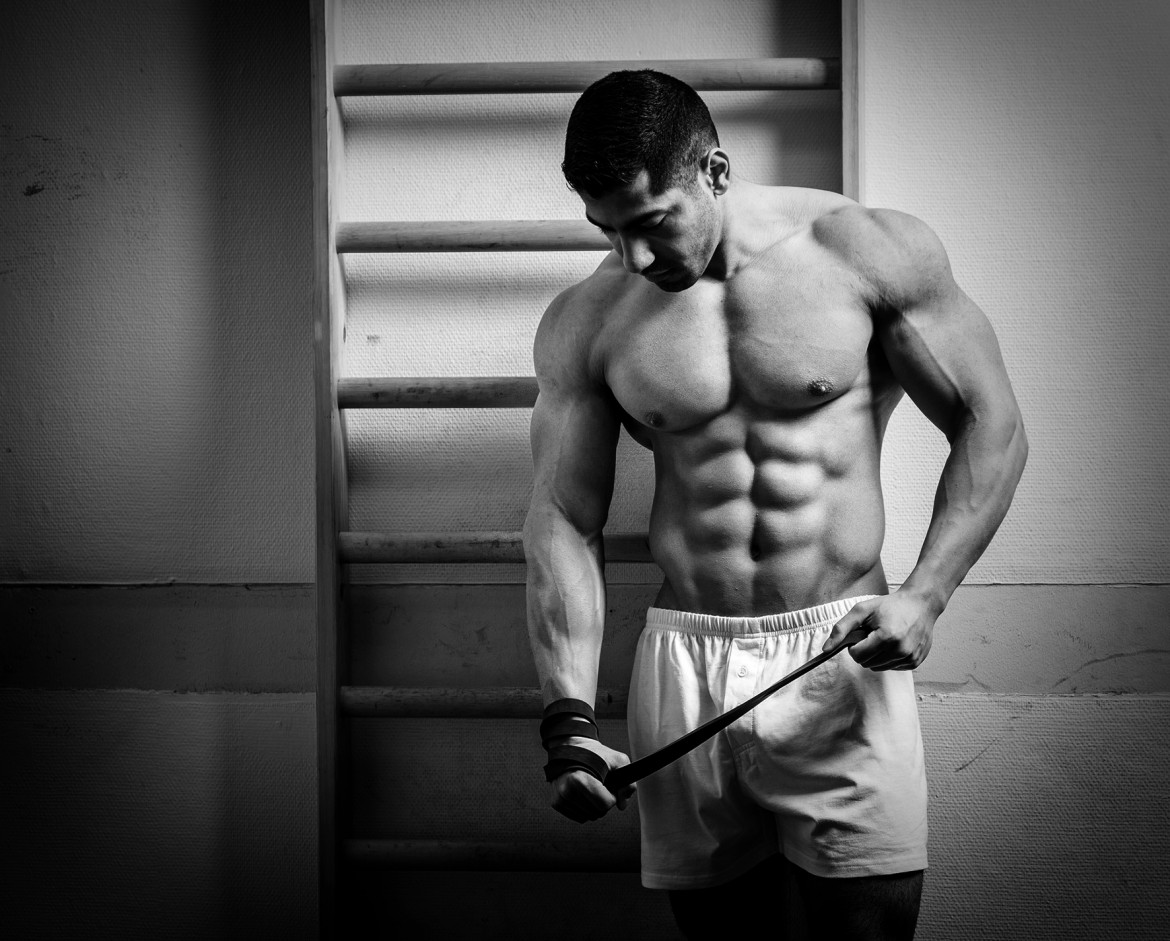
HOW TO STAY FIT?
There is a reason why ZLCOPENHAGEN use fit & healthy models, fitness & health exudes personal strength & success on the most basic level. Here is how to achieve it!
For Fitness And Nutrition Following a meal plan or a given workout for 12 weeks is easy, keeping a fit and healthy physique 365 days a year is hard. This segment is dedicated to helping you build a sustainable physique that can coexist with a busy every day working life.
We’ve all read the articles and heard the commercials; ”Get ripped in a few weeks” ”Loose fat, gain muscle with this miracle product”. These claims are often no more than commercial propaganda, and I’m here to tell you, it doesn’t work that way. The overall goal is not to achieve fitness for 12 weeks, but to eat, train, and live in a sustainably fit way. For that to happen, 4 crucial components need to be in harmony: Training, diet, rest and finally balancing it all with life outside the gym, kitchen, or bed.

WHEN IT COMES TO TRAINING
I would like to start by pointing out that there is no difference in optimal training style between men and women. Our bodies react the same way, to the same kinds of stress during training. With that in mind, especially for you ladies, do not be afraid to train heavy! Big exercises like squat and deadlift have gotten especially popular in mainstream fitness circles lately for their abilities to give women a “squat butt”. Well, big exercises like pull-ups, bench press, overhead press, bent-over rows, and deadlift have the same effect on the rest of your body that squats have on your butt. And for you guys, who prefer biceps curls and triceps pushdowns to bent over rows and bench press, the bigger the exercise, the more effective. That means that bench press and rows will give you bigger arms the fastest. Even though, and actually precisely because, they aren’t specific to a single muscle group.
So I would recommend for everyone to have a basic training program consisting of bench press, overhead press, bent-over rows, pull-ups, squat, and deadlift or some variety of these. You can of course add on more exercises. If you like, but these six are what I would deem the essential exercises for any workout plan. Your workouts should be geared towards consistent progress in strength to ensure that you keep moving forward, in building both strength and muscle mass. I highly recommend keeping a logbook over your training.

MOVING ON TO DIET
It is no secret that a healthy and well-balanced diet is a huge part of being fit and healthy. Unfortunately, there are a lot of misunderstandings regarding food and fitness. First of all, losing and gaining weight can be broken down as simple as this: If you consume fewer calories than you burn, you lose weight, and if consume more calories than you burn, you gain weight.
The end. Different food sources have different effects on the body, but 100 calories are 100 calories. How many calories you burn per day, and thus how many you should consume to lose or gain weight, is completely individual. My best advice would be to try to note down the exact amounts of the foods you eat for a week or two, in an app like “Myfitnesspal”, which will then tell you how many calories are in your food.
If you compare this daily calorie intake with how your weight changes (or doesn’t), you can dial in on how many calories you need per day to reach your goal. Once you’ve found your daily calorie intake, you must decide how to split the calories across the three macronutrient-groups; fat, carbohydrates, and protein.
EATING
I recommend eating 2 times your body weight in grams of protein a day, getting at least 30 percent of your daily calories from various fatty acids, and getting the rest of your calories from, primarily complex and fibrous carbohydrates, while leaving room for, at least, 3 servings of vegetables and 3 servings of fruit a day.
I know this is a bit heavy to take in, but Myfitnesspal will help you through it step by step. If you don’t want to weigh your food, my advice would be to listen very carefully to your appetite, eating healthy and varied, getting enough protein from sources like chicken, eggs, meat, milk, protein powder, or vegetarian alternatives, and getting enough fibers along with fruits and vegetable.
Our bodies are actually pretty reluctant to make changes in our weight, so if you want to gain weight, you should not be hungry throughout the day, but not constantly too full either. Feeling a bit full for the entire day will normally do the trick if what you eat isn’t complete junk. Vice versa, if you want to lose weight, you should feel a tiny bit hungry throughout the day, not starving.
CHANGE THE WEIGHT
When aiming at changing your weight, remember once again that your body doesn’t like to do so, therefore it will change your metabolism to match your caloric intake. This means that if you are in a prolonged caloric deficit, your body will slow down your metabolism, so you burn fewer calories, in order to keep your weight the same. Therefore, if you want a steady, prolonged weight loss, you need to progressively lower your daily caloric intake.
The opposite goes for gaining weight (at least in the form of muscle mass), your body will raise your metabolism and you will burn more calories, hence you need to keep progression up in calories, slowly but steadily. This is why it is a very good idea to keep track of the exact amounts of calories and macronutrients you consume, this makes manipulating them much easier.
At this point I would like to issue a warning; many people develop unhealthy obsessive relationships with food over a need to control every little thing, that’s why it’s important to remember, that there is no reason to get obsessive about calorie intake since one’s daily caloric need is virtually impossible to predict 100% precisely, which is why even if you count every single meal, you are still only giving an estimated guess, which is also why there is no need to worry about slight inaccuracies in your diet since it will never be completely accurate anyway.
DAILY ROUTINE
That being said, getting as close as possible to your desired daily calorie intake is of course most optimal. What I’ve mentioned above is mostly related to changes in body composition, and basic healthy eating, of course, there are food items that will have a more positive effect on your health than others, but only relying on these foods, often end up getting boring and hard to stick with.
That’s why I would recommend eating at least 3 servings of fruits and vegetables, getting a varied intake of fatty acids, from different sources, avoid an extreme amount of red meat, eating fish several times a week if possible, and generally trying to be as healthy as possible. I also highly recommend supplementing your diet with vitamin D3, especially if your daily life doesn’t include a lot of exposure to sunlight. This should ensure a basic high level of health. If you have any doubt about your state of health, you can always get blood work done at a doctor’s office, this will give you a crystal clear picture of any potential deficits in your diet.
REST
Let’s talk about the third and final piece of the fitness puzzle; rest. In this case, rest covers two different concepts, the first is the resting period between workouts, and the other is sleep. The rest period between workouts should be dictated by how well you as an individual recover after a workout, however, I normally recommend at least one full day’s rest between all-out weight training sessions of the same muscle groups, but no more than 4 days.
This is all based on the recovery curve. The recovery curve shows the recovery period for a normal healthy human being, and dictates that it takes about 24-48 hours for muscle tissue to fully recover from the stress of a workout, after this rest time, the muscles have “super compensated” which means they have responded to the stress by growing stronger.
This is, however, a temporary state, and if the muscles aren’t stimulated again around this point, they will start to lessen in size and strength again, an effect we all know from people who stop training, they get smaller and weaker.
WORKOUT
This doesn’t mean that you will lose all your muscle mass if you go more than 4 days between workouts, but the most optimal is to train each muscle group with a frequency of 24-48 hours between workouts. Changing to high-frequency training may feel hard, to begin with, but if you stick with it, you will most likely see some great results!
A quick side note is that your nervous system needs more time to recover than your muscle tissue, which is why it can be very beneficial to take a week off from training at maximum intensity perhaps once every 4 to 6 weeks and go down to training with lower weights and volume. This will allow your nervous system to recover, and afterward, you will likely feel a lot better when training, and also be stronger. The other part of the rest is sleeping.
SLEEP
I won’t go into too much detail here, since most of you already know that about 8 hours of sleep a night is sufficient for most people. Even if you can’t get 8 hours of sleep each night, try to keep your sleep pattern as steady as possible, by going to bed and waking up at the same time every night and morning, as much as possible, this will make it easier for both fall asleep and wake up. I will add that a power nap of 30 minutes can be great for both health and recovery, so take a quick nap when possible.

BEING FIT & HEALTHY IS A MARATHON; NOT A SPRINT
I will finish this segment by telling you what most other fitness-related sources won’t. That it is okay to not give 100% all of the time. Way too often I hear and read about how you need to give your all and your best at all times to achieve your desired level of fitness. This simply isn’t true, although I myself have just listed a bunch of things that will help you achieve and sustain a high level of fitness, your body and your health won’t fall apart if you eat a burger from McDonald’s or miss a workout.
Being fit and healthy is a marathon, not a sprint, and if you can’t find harmony in your training and diet along with your day to day life, then something will eventually give, and for most people what falls apart is their training or diet, simply because they can’t maintain their constant extreme level of maintenance in regards to both training and diet.
Of course, you should do your best to be as dedicated to your diet and training as possible, but remember to live the rest of your life as well, don’t be afraid to have a few drinks and stay up late once in a while, and if you miss a workout, get after it tomorrow instead!
Do the math yourself, what will give you the best results, 12 weeks of extreme training and diet which then becomes too extreme to maintain, or several years of consistent training and healthy eating with minor sidetracks, that are quickly corrected, because the balance between your fitness and your life allows you to do so? Fitness shouldn’t be about extremes, and more isn’t always better.
RUN
It doesn’t matter if you step off the path for a short while if you then get right back on track for the long run. The key to the dream body and good health is to learn how to make your fitness lifestyle sustainable, so be dedicated, work hard and give it your best, but remember to live a life while doing so.
Useful Links:
I hope you’ve enjoyed this segment, and that you have been able to take something away from it. I certainly enjoyed writing it, and I wish you a continued great journey on the path to fitness and health.
Text by Christian Vang Madsen
Model Hashim Youshaa
Photo by Stefan Wurzel




